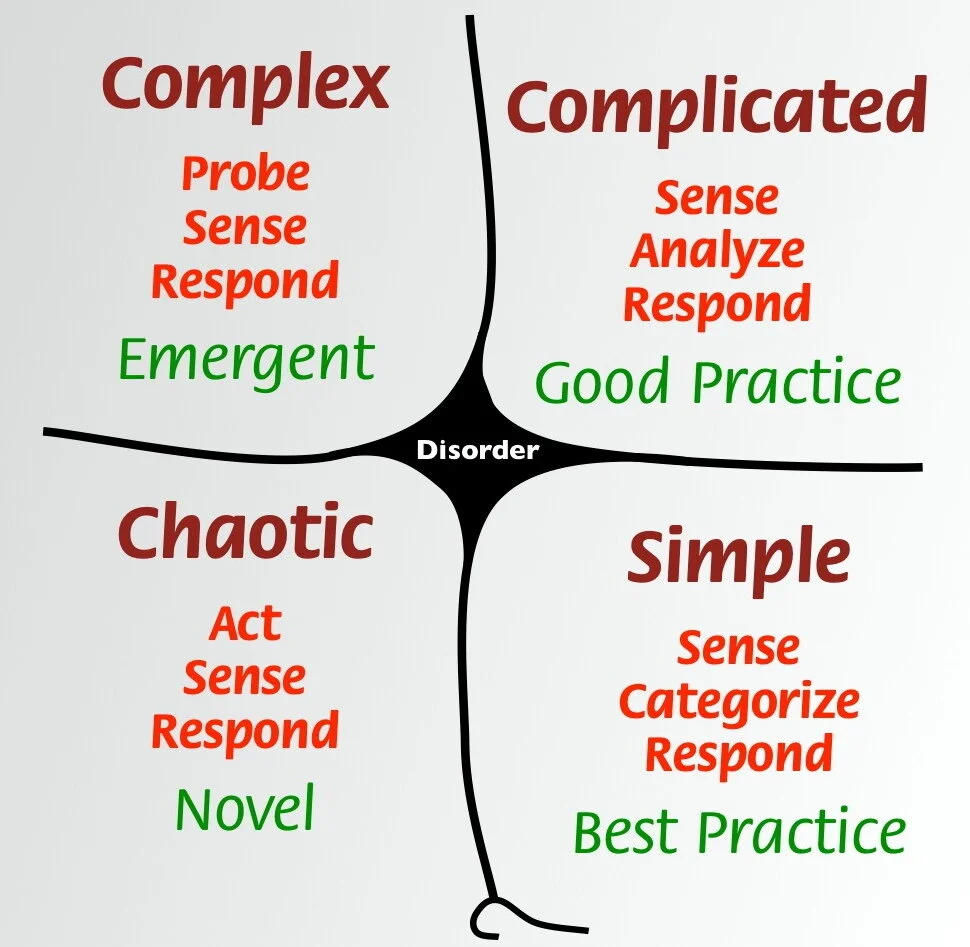This week we are talking about how to be a 𝙎𝙤𝙡𝙪𝙩𝙞𝙤𝙣 𝙊𝙧𝙞𝙚𝙣𝙩𝙚𝙙 𝙇𝙚𝙖𝙙𝙚𝙧. The Cynefin framework is a conceptual framework used to aid decision-making, created in 1999 by Dave Snowden. According to Snowden, there are four categories to solve the different types of problems.
Simple: Sense-Categorize-Respond
We identify the problem within a known category of similar or like problems, and we apply a solution based on existing best practices.
Complicated: Sense-Analyze-Respond
We analyze a certain problem from which we don’t have previous best practices to be based on. Once we determine the cause-and-effect relationship, then we set up the actions needed to solve the problem, creating our own best practices.
Complex: Probe-Sense-Respond
In this case the cause-and-effect is not clear and that is why we need to investigate first the situation, or take some limited actions to get additional information regarding the cause. Then we analyze the result or consequences of action and then we come up with the solution. That is why the response is considered an emergent practice.
Chaotic: Act-Sense-Respond
Similar to the previous one but added the ‘urgency’ factor, when there is no time to explore and analyze, we apply an initial solution based on intuition, based on our own experience and judgment. Then we can analyze what happens as a result of a certain solution, and we can modify the solution to resolve unintended or negative consequences.
Snowden also talks about Wicked/Disorder problems that require different types of approaches in order to solve them correctly.
Now how can we cultivate a solution-oriented mindset in order to be a great leader? Here are some tips:
Ask For Feedback
Ask your team member to help you identify areas in your leadership style for opportunities for growth or areas of improvement. Stay open, receptive and positive as you receive that feedback.
Ask The Questions To Find The Right Answers
Be curious to answer those questions that will lead to the right answers.
Stop Playing The Blame Game
Focus on the objective facts and generate a collaborative culture with your team to better face the situation.
Empower Your Team To Find The Answers
If you lead a team, do not ‘give them the fish, but instead, teach them how to fish’. This means, we are empowering them to be proactive on finding solutions.
Embrace Mistakes
Take advantage to learn from your mistakes and grow.
Celebrate the wins, and the journey it took to get there
‘Teams get so focused on problem-solving that often they step over celebrating the wins—and not just what the wins are, but what it took for them to get the win.’




